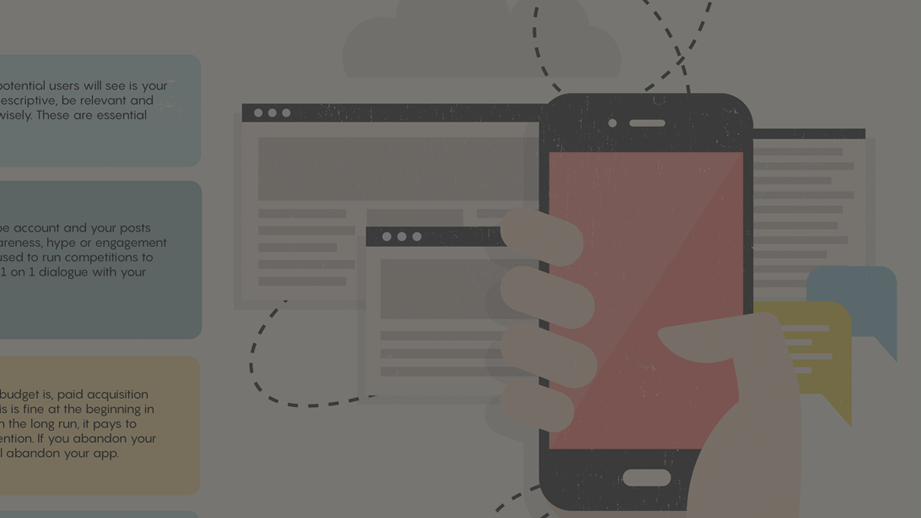User Behaviour Top Tips From The Experts
How do users behave within your app? What do they like? What do they dislike? It can be easy to ignore these questions and focus on different Key Performance Indicators (KPI) such as retention or downloads, however, it’s just as important to track user behaviour in your mobile apps.
Analysing your user’s behaviour helps you see how your users are interacting with your app … therefore, having the right tools put in place will help.
“Every action in marketing and product development should be measured and analysed. It shouldn't be based on gut feeling.” Tigran Hakobyan, Inapptics
User behaviour analysis is complex in practice, of course, but often marketers overcomplicate it. Users provide insight into how they tick by downloading, engaging, scrolling and navigating through your app. By using user behaviour analytics, it allows you to translate the insight provided by the app.
We spoke to some industry experts about user behaviour and what tips they had to ensure a mobile experience strategy of the highest standard.
1. Pick An App User Behaviour Analytics Tool That Best Suits You
Not all apps are created equal, and neither are app analytical tools. According to Tune, app analytics tools can be divided into three macro categories.

Source: Tune
Marketing analytics: This is key to understanding how to monetise the app, increasing ROI and not losing customers.
In-app Analytics: Basically, in-app analytics is everything a user does within the app.
Performance Analytics: Technically these are in-app, but less concerned with the users and more so with the “machine” itself. Identifying pages that make an app crash, or devices on which the app slows to crawl, is the groundwork upon which all the analysis above rests.
In terms of mobile experience, in-app analytics and performance analytics would be the more applicable types of tools.
Using an app analytics tool is vital to creating a positive mobile experience. By gathering this data you can evaluate the user’s mobile experience to see what might need to be changed or improved based on in-app activity. You have spent the time and money on building your app and, with app analytics, you can interpret your user’s behavioural journey, as well as seek out any problems with the app.
2. Back Up Your Hypothesis
A hypothesis is a supposition or proposed explanation made on the basis of limited evidence as a starting point for further investigation. These are usually made at the beginning of your app marketing strategy. If you think back to sitting in science class … you have an experiment and the teacher asks you to make a prediction of what you think will happen. That is a hypothesis ... it's a similar process.
“… You can then make hypothesis-driven optimisations backed with real data. Not only this, but you can use behavioural insights data to create audience segments and profiles to execute targeted push strategies with a higher likelihood of increasing engagement.” Megan Dean, Yodel Mobile
By analysing the user’s app behaviour you can reinforce the hypothesis made at the beginning, with the data collected.
“... Testing hypotheses, analysing results, improving, repeating... all standard ways of working now and that's a big shift from the old days where it was a senior person's opinion that drove everything. Of course, that still exists, but in my experience, it's becoming less of a factor.” Andi Jarvis, Eximo Marketing
The experts agree that testing and backing up your hypotheses is an important tip to improve your users mobile experience. It provides insight into what your users expect to experience in your app and if they will be happy with it.
3. Don’t Ignore The Findings
“… the real user experience and the way the app users use the app can be totally different from what the UX designer has envisioned. So it's critical to have access to insights about real user behaviour in order to see how people use the app, where they get stuck, what works for them and what doesn't. Only with this kind of information, it is possible to come up with meaningful improvements that will lead to better mobile UX.” Tigran Hakobyan, Inapptics
As Tigran has mentioned, just because you think your users are going to use your app a certain way doesn’t mean they will. Therefore, analysing the user’s in-app behaviour via an in-app analytics tool will show you the journey they take. Using a tool like a heat-map will show you the most and least frequently visited pages in your app. With this data, you can understand the user’s behavioural journey, and also help identify potential in-app issues. For example, maybe a page that you expected would be very popular isn’t, by paying attention to the user behaviour, it will highlight this to you and you can then set about rectifying this. It could be something as simple as the page name that is confusing your users.
4. Define Your Goals
“What is not measured, cannot be improved, so unless we know exactly how users interact with our mobile app or game, we can't make an educated guess on what exactly keep them engaged to our product and what features they can't live without. Understanding user behaviour is key to improving product adoption, driving the users towards the "a-ha" moment, making them understand the real value of your app and fall in love with it. Unless you measure the particular things that the users love about your app - engagement, retention, and good monetisation would not be possible.” Katerina Zolotareva, TheTool
As Katerina has mentioned nothing can be improved if it is not measured. Therefore, assuming that you have researched the goals that you want to meet, you need to have something to measure. It is important to establish the Key Performance Indicator metrics (KPIs) that you are focused on improving in order to achieve your goal.
As mentioned before it is important to define your goals before you start thinking about your data so that you can ensure you are spending the right amount of resources in tracking your KPI’s.
Conclusion
User behaviour is vital to creating a seamless mobile experience. Picking the correct user behaviour analytics tool for your goals and what you hope to find out, will save you time and also reveal data to enable you to create a positive mobile experience for your mobile app users. Remember to use your findings and not ignore them. Your users are navigating through your app differently from the way you thought. Use this insight to your advantage. Don’t just collect the data and store it in a spreadsheet for management report meetings. Create a mobile experience around your findings. This may seem like common sense but you would be surprised how many just brush the data under the carpet so to speak.
Book a free demo today to see how Hurree can help you transform your company reporting and improve your sales & marketing output 💌 Don't hesitate to get in touch via contact@hurree.co if you have any inquiries - we’re happy to chat!
Thank you to all our Mobile Experience Experts for sharing their valuable knowledge!
Share this
You May Also Like
These Related Stories

How Can Marketing With Emojis Improve Mobile Relationships? 🤔

[Infographic] Developing your Mobile App Marketing Strategy
-1.jpg)

